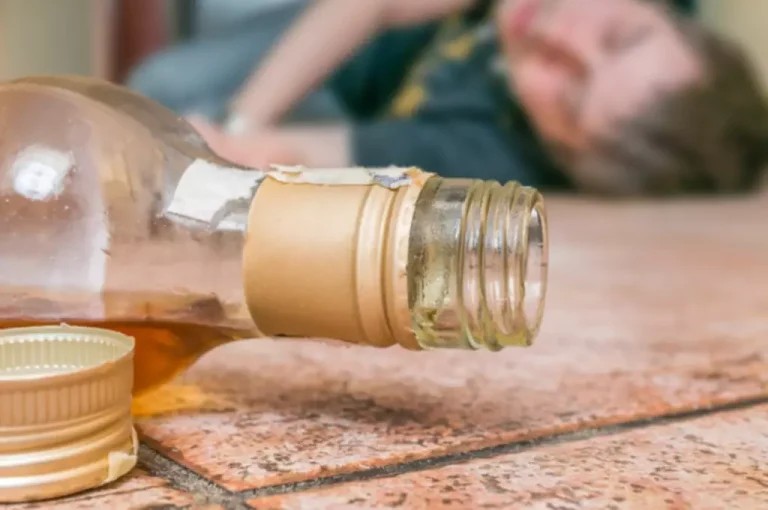
For example, an alcoholic or recovering alcoholic with cerebellar tremor who tries to push a button or grasp something would be unable to finish the movement because their hand is shaking so badly. https://ecosoberhouse.com/ Each day, take time to revisit your recovery goals and the reasons you decided to stop using alcohol. After discharge from treatment, follow-up aftercare is vital for successful long-term recovery.
- Eat several small meals a day to maintain a healthy metabolism and to reduce the likelihood of cravings caused by hunger.
- You will be given fluids by an IV and may be sedated with medication to ease the withdrawal symptoms.
- You should combat alcohol withdrawal in a professional rehab center, as quitting alcohol completely on your own can result in dangerous withdrawal symptoms.
- Detoxing means clearing the alcohol from the body and managing withdrawal symptoms.
The Relationship Between Bipolar Disorder and Addiction

Medical detoxification programs offer supervised environments where healthcare professionals can monitor your condition and provide medications to alleviate withdrawal symptoms, including tremors. Alcohol shakes can occur within hours to days after reducing or stopping alcohol consumption and are often accompanied by other withdrawal symptoms such as anxiety, sweating, nausea, and insomnia. While uncomfortable, alcohol shakes are usually not life-threatening on their own and can be managed with proper care and treatment. These depressant actions wear off after a person stops drinking alcohol, and the nervous system becomes overexcited.
Chief Medical Editor, Harvard Health Publishing
- Tremors are caused by a problem in the areas of the brain that control the body’s muscles.
- They will also give you medications that can help ease physical pain, stabilize your mood, combat depression, and help you sleep better.
- A healthcare provider can help guide you through the process and might even recommend treatments to make things a bit easier on you.
- How you stop alcoholic shakes is going to depend heavily on why the shakes are happening.
DT’s are less common than regular alcohol tremors, occurring in about 5 percent of patients going through withdrawal. DT’S will typically appear around 2-4 days after a person’s last how to stop alcohol shakes drink. Alcohol tremors are involuntary shaking/trembling of one or more parts of the body. Alcohol tremors are a response to alcohol withdrawal or alcohol use disorder/alcoholism.
Alcoholic Nosebleeds: Causes, Prevention, and Recovery Strategies
- In addition to adopting healthy lifestyle choices, people with alcohol tremors often take propranolol to control tremors.
- The only way to prevent delirium tremens is to stop, or dramatically reduce, your alcohol intake.
- Approximately 5% of recovering alcoholics will develop a condition known as Delirium Tremens or DT.
Recognizing the distinction between minor shakes and the more severe delirium tremens is crucial in ensuring timely and appropriate care for individuals undergoing alcohol withdrawal. Minor shakes, or alcohol tremors, are among the most common symptoms experienced during the early stages of alcohol withdrawal. They are often accompanied by other mild withdrawal symptoms like anxiety, nausea, and irritability. While distressing, minor shakes are not immediately life-threatening and can be managed with appropriate care and supervision.
Does Alcohol Dehydrate You? Understanding The Health Risks

However, long-term alcohol abuse can cause brain, nerve, and liver damage, which may result in permanent tremors. What starts out as alcohol shakes in people suffering DTs could develop into full-blown seizures. The most common type of seizure affecting alcoholics who detox without medical supervision is called a generalized tonic-clonic seizure. Furthermore, alcohol increases the excretion of certain nutrients through the kidneys, further exacerbating deficiencies. For instance, excessive alcohol consumption can result in the loss of magnesium, a mineral that plays a crucial role in muscle relaxation and nerve function. A reduced magnesium level can contribute to muscle spasms, cramps, and, notably, tremors.
What Causes Alcoholic Shakes?
A score of 15 or higher means you’re at high risk for delirium tremens. The first thing you should do after seeking immediate medical attention for the alcohol shakes is to undergo detox treatment. When your detox is complete, the easiest and most beneficial way to move forward may be to start inpatient or outpatient substance abuse treatment. Alcohol shakes, as evident by their name, are most common among individuals who suffer from alcohol addiction. They are usually a symptom of alcohol withdrawal, but can be a result of other alcohol-related issues as well.

- When blood sugar gets low, it can result in shaking, along with other hangover-like symptoms, including sweating and headaches.
- When you suddenly stop drinking after a long period of alcohol use, your brain and nervous system can’t adjust quickly.
- But maybe you’re unsure about quitting completely and don’t want to hold yourself to that goal.
- If someone believes they may be experiencing alcohol use disorder or are experiencing tremors regularly, they should speak with a healthcare professional.
- Unlike regular alcohol tremors, DT is a medical emergency and can be life-threatening if it’s not treated.
People who experience severe symptoms of alcohol withdrawal may also develop delirium tremens. Committing to the alcohol recovery process is the best way to keep tremors at bay. Over time, your body adjusts to being alcohol-free, and you won’t experience withdrawal symptoms.

